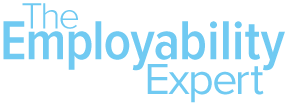

Without a doubt, Linked In has transformed the world of job search and talent acquisition. In Part 1 of this series, we covered 6 Proven Profile Strategies For Attracting Recruiters & Hirers.
In Part 2, we reveal how job seekers should use the Linked In “connection engine,” properly and smartly to get back to work.
There are 2 main purposes for job searchers establishing new connections on Linked In:
- Expand visibility with targeted potential employers or recruiters.
- Develop relationships and conversations with professionals who can employ or recommend to employers.
Not all recruiters are created equal for the job seeker.
For example, if one is seeking a sales position, it wouldn’t be savvy to connect with a legal recruiter.
Further, as most recruiters shy away from connecting with unemployed professionals they don’t know or haven’t been introduced to, job seekers are advised to connect with targeted recruiters via referral or personal introduction.
Here are 5 tips for smarter Linked In connecting for job search:
1. Focus on connections in your most preferred career path. While you may be searching in 2 or 3 fields, your Linked In profile should feature your main career path. Unless you are changing careers, seek connections in this arena first so the relationships make sense to your new colleagues.
While you may be searching in 2 or 3 fields, your Linked In profile should feature your main career path. Unless you are changing careers, seek connections in this arena first so the relationships make sense to your new colleagues.
 While you may be searching in 2 or 3 fields, your Linked In profile should feature your main career path. Unless you are changing careers, seek connections in this arena first so the relationships make sense to your new colleagues.
While you may be searching in 2 or 3 fields, your Linked In profile should feature your main career path. Unless you are changing careers, seek connections in this arena first so the relationships make sense to your new colleagues.
2. Quality AND Quantity. Building up a contact base of 500 or more is now considered desirable and demonstrates you understand networking to potential employers (yes, they do care about this). However, building a quality, ideal connection base is equally if not more important. Aim to connect to people who are leaders and decision makers in your field.
3. “What’s In It For Them?.” Encourage potential connections to accept your invitations by showing that you travel in relevant circles, and understand / are interested in their world. Ex.: “We are both members of ……….”, ” I read your book on……” “I read your blog” or “I watched your video on…”.
4. Avoid directly asking for a job or mentioning your search in your connection invitation. First, build rapport with new connections. As the trust builds, explore if they might be a source for information, guidance, and possibly pathways to job opportunities.
5. Personalize. Using the generic Linked In connection message is a turn off to “hesitant connecters.” Include a personal message in each connection request to make the invitation more compelling.
Next up: Part 3: Leveraging Linked In Groups For Job Searchers

